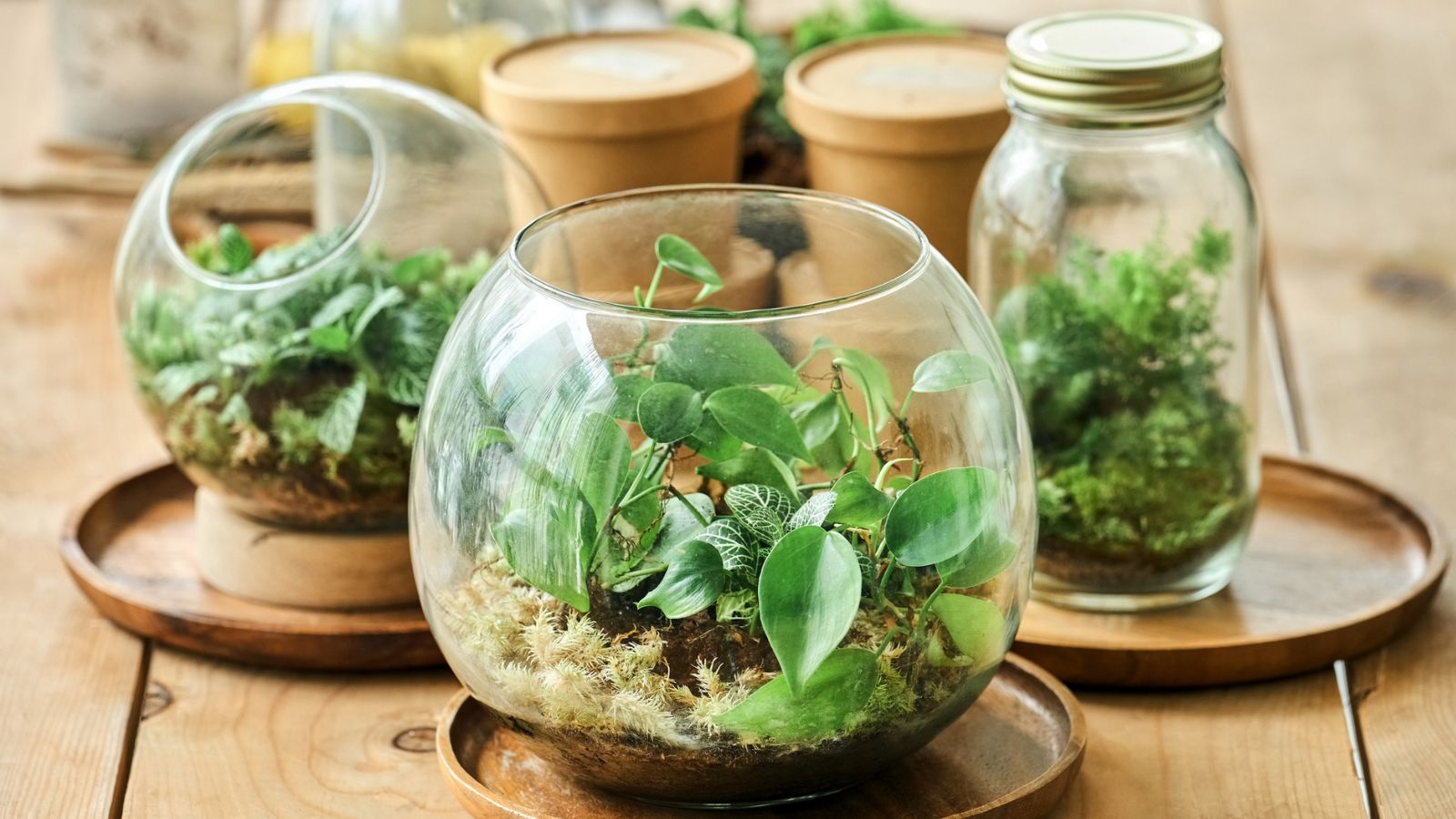
With terrariums, there are two choices. Either leave the terrarium open to the elements or close it up with a stopper.
If you aren't a botanist, it isn't immediately obvious why you'd choose one terrarium technique over another.
I spoke to a plant expert about the differences between the two styles of terrariums, the benefits and drawbacks of each, and which rooms are best suited for the different terrariums.
What's the difference?
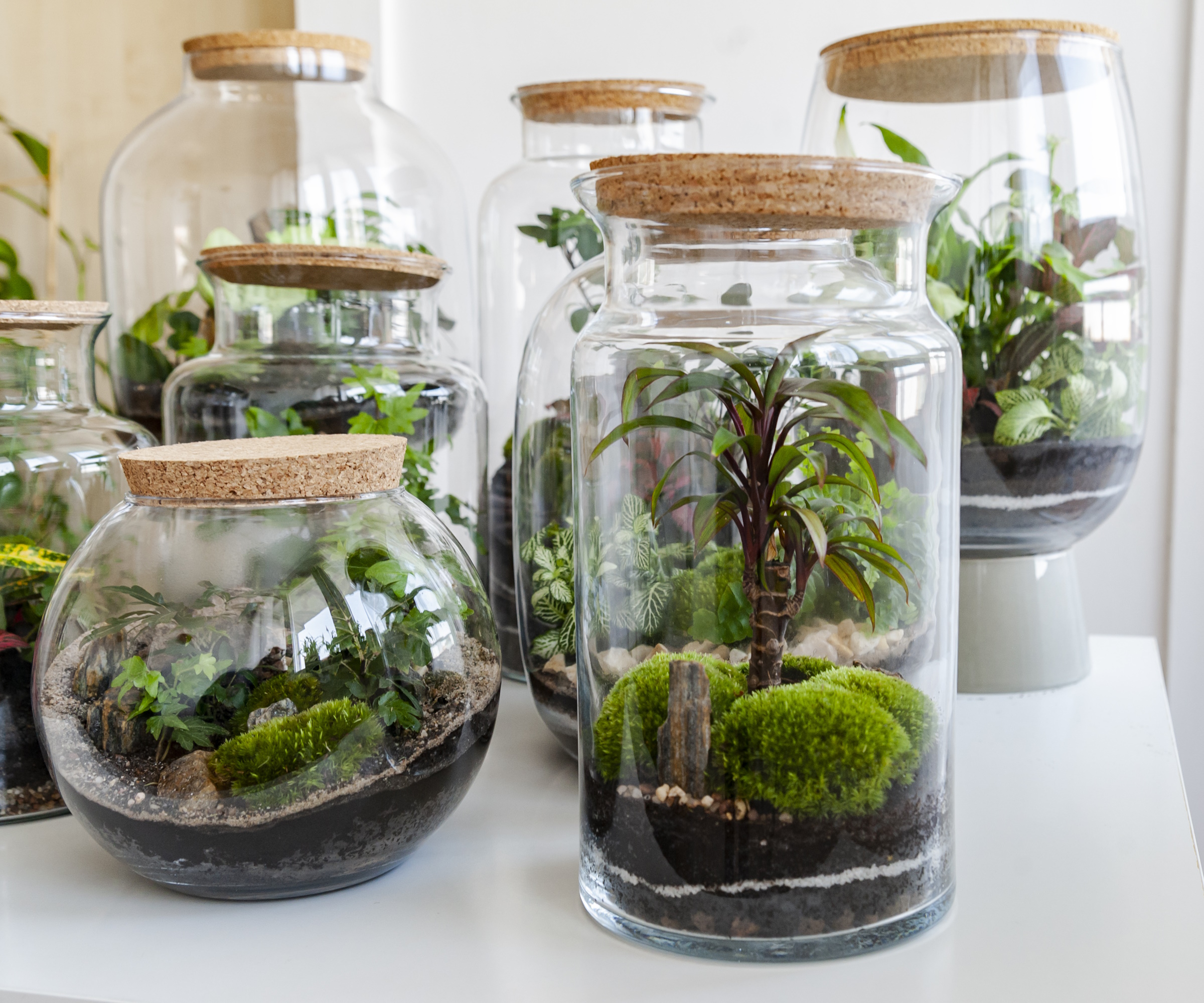
You have two options when it comes to terrariums: closed or open. It's a simple difference but it has a big impact on your plants. Closed terrariums have a lid or stopper. They are either mostly closed to outside air and opened to add water or are permanently sealed to create a self-sustaining climate within the bottle.
Open terrariums, however, are the opposite - they're permanently open to the conditions in a room.
Plant expert Tammy Sons explains that 'Sealed terrariums should be used in humid rooms that tend to be warmer, like bathrooms or offices where consistent humidity can flow. Open terrariums should be placed in living rooms or bedrooms where the air is drier for plants that do not need as much humidity.'
Crucially, Tammy says that the choice comes down to the needs of your preferred plant. 'Neither terrarium is better than the other, it all depends on plant choice and humidity needs alongside the most important thing - personal preference. '
What are the benefits of a sealed terrarium?
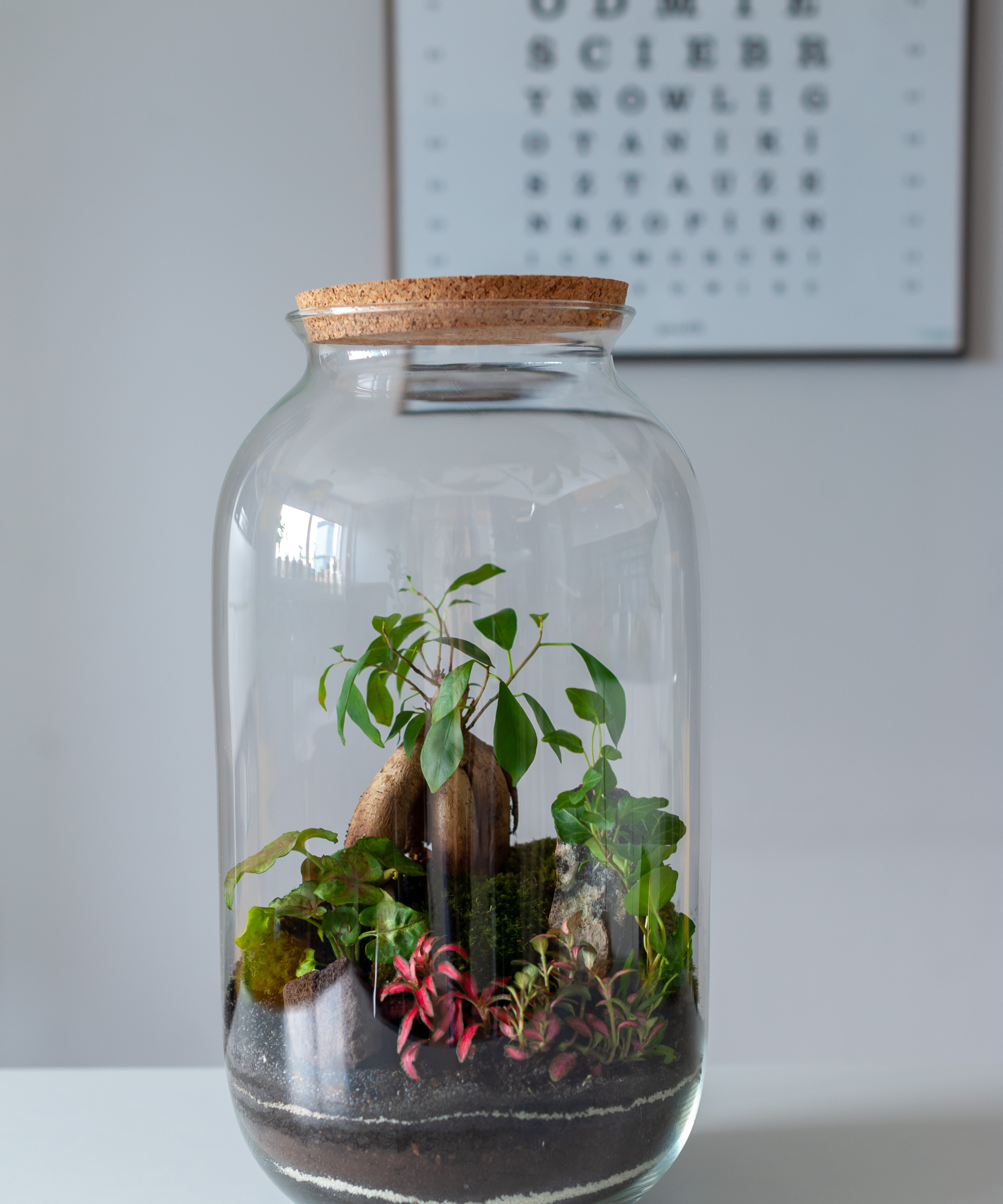
The biggest benefit of a closed terrarium is that it needs very little intervention. Permanently closed terrariums create their own water cycle, reusing water in a never-ending process. You never need to add water or adjust these terrariums.
This means you can create a miniature habitat that never needs any work. Tammy explains that 'Sealed terrariums are self-sustaining. They need high humidity for moisture-loving plants and only minimal watering.'
Closed terrariums are best for moisture-loving plants like Alocasia, Maranta, and Pilea.
This simple glass terrarium is a great place to start, perfect for small ferns and a single taller plant, perhaps a snake plant.
This rare terrarium is topped with a glass ball instead of a cork. It's still airtight, but it looks more delicate than the usual cork stopper.
A low bulb terrarium like this is perfect for tight spaces like narrow bookshelves, offering a lot of internal volume for your plants without taking up too much room in your home.
What are the drawbacks of a sealed terrarium?
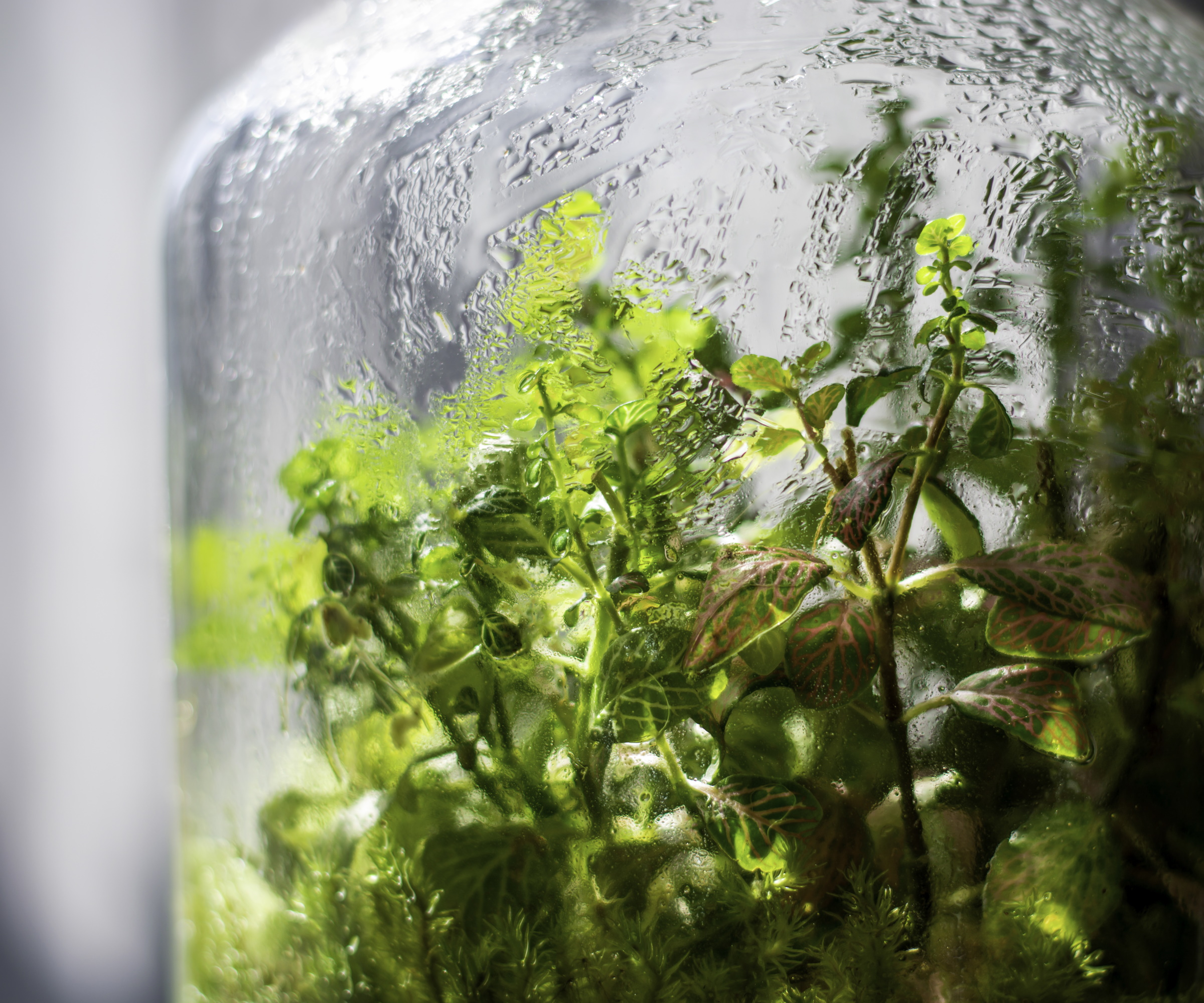
There are a couple of issues with closed terrariums. The first is that they're susceptible to mold and rot. You need to keep sealed terrariums sterile, which is tricky enough, but once the terrarium is sealed it creates the perfect warm, moist environment for fungus and bacterial infection.
Tammy Sons says 'The drawback of a sealed terrarium is the risk of mold or rot, especially if they're overwatered'. It's easy to overwater these terrariums because they hold moisture forever - if you add too much at the start, none of it will be lost to evaporation.
Closed terrariums fog up. This is a natural part of the moisture cycle in a sealed system, especially in the morning; cold air outside the terrarium cools the glass while warm, moist air trapped in the terrarium rises. When this moist air hits the cold glass, the water in the air cools into condensation. However, this means that you can't always see the plants in your terrarium. It can look a little messy, even though it's a perfectly normal part of the terrarium.
What are the benefits of an open terrarium?
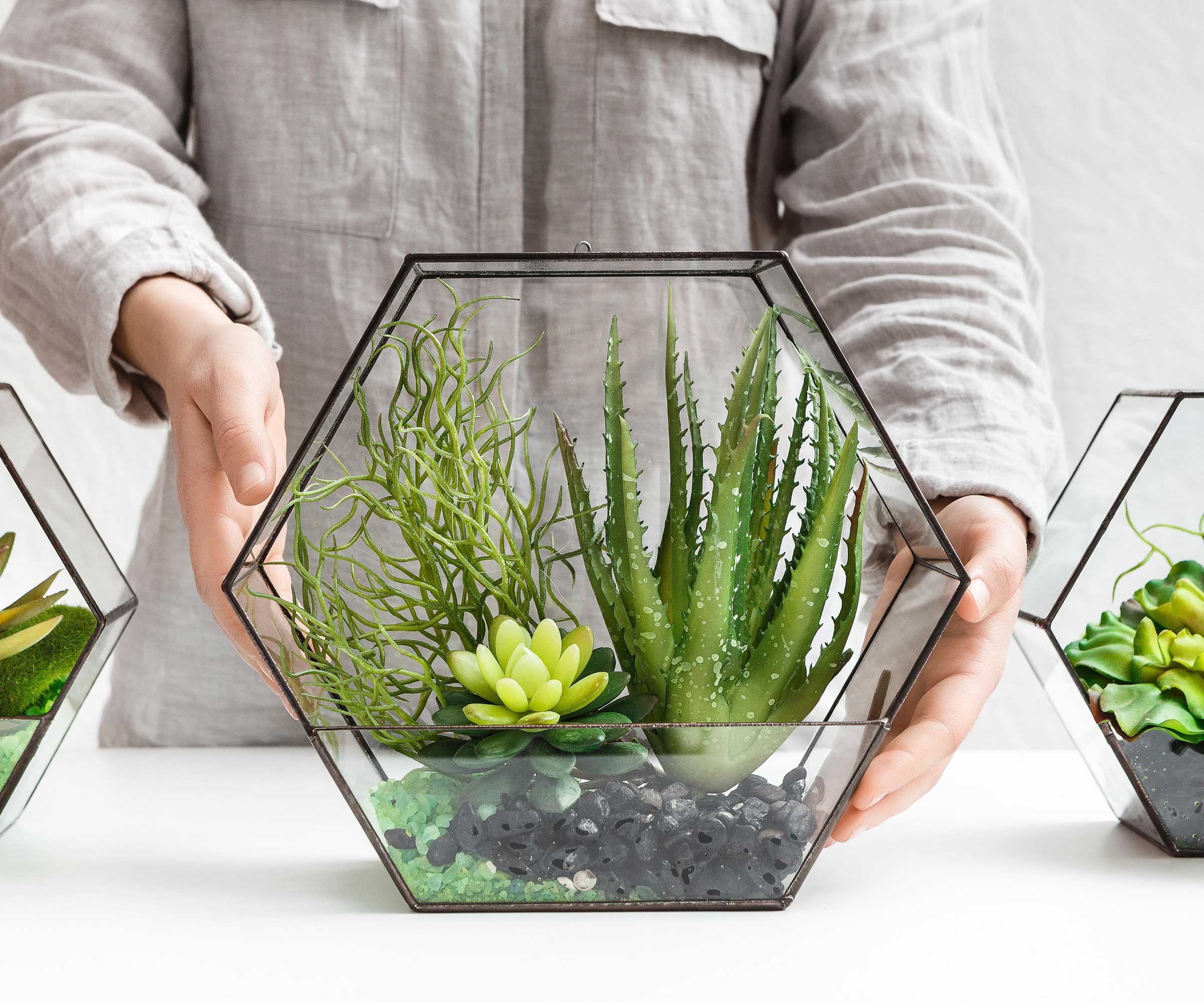
Open terrariums are just like closed terrariums, but they're permanently open to the air. There are several benefits to this. Tammy Sons explains that 'Open terrariums have a better airflow, meaning the risk of mold is lower. It's also easier to manage the water levels inside this terrarium so you can keep up with possible over-watering or drying out.'
This means that open terrariums tend to be a better option for beginners because they're easier to adjust to different conditions. They're best for nerve plants, creeping figs, or polka dot plants.
Tammy also says that 'A wider range of plants can be used in open terrariums'. For example, air plants (Tillandsia) are perfect for open terrariums. In the tropical wild, these delicate plants grow high up on the bark of trees and in shifting sands. They need minimal watering and they don't even need soil, because they absorb nutrients and water from the air. That means that air plants need open terrariums for their respiratory cycle, and they usually don't work in closed terrariums. This makes open terrariums a little more versatile than closed terrariums.
This open terrarium comes with a range of succulents already planted, ready to use as soon as it arrives.
However, bear in mind that no plants are included - this is just the glass bowl so that you can customise your own terrarium.
This little hanging terrarium is a perfect example of an open terrarium for air plants. It includes some air plants, too.
What are the drawbacks of a open terrarium?
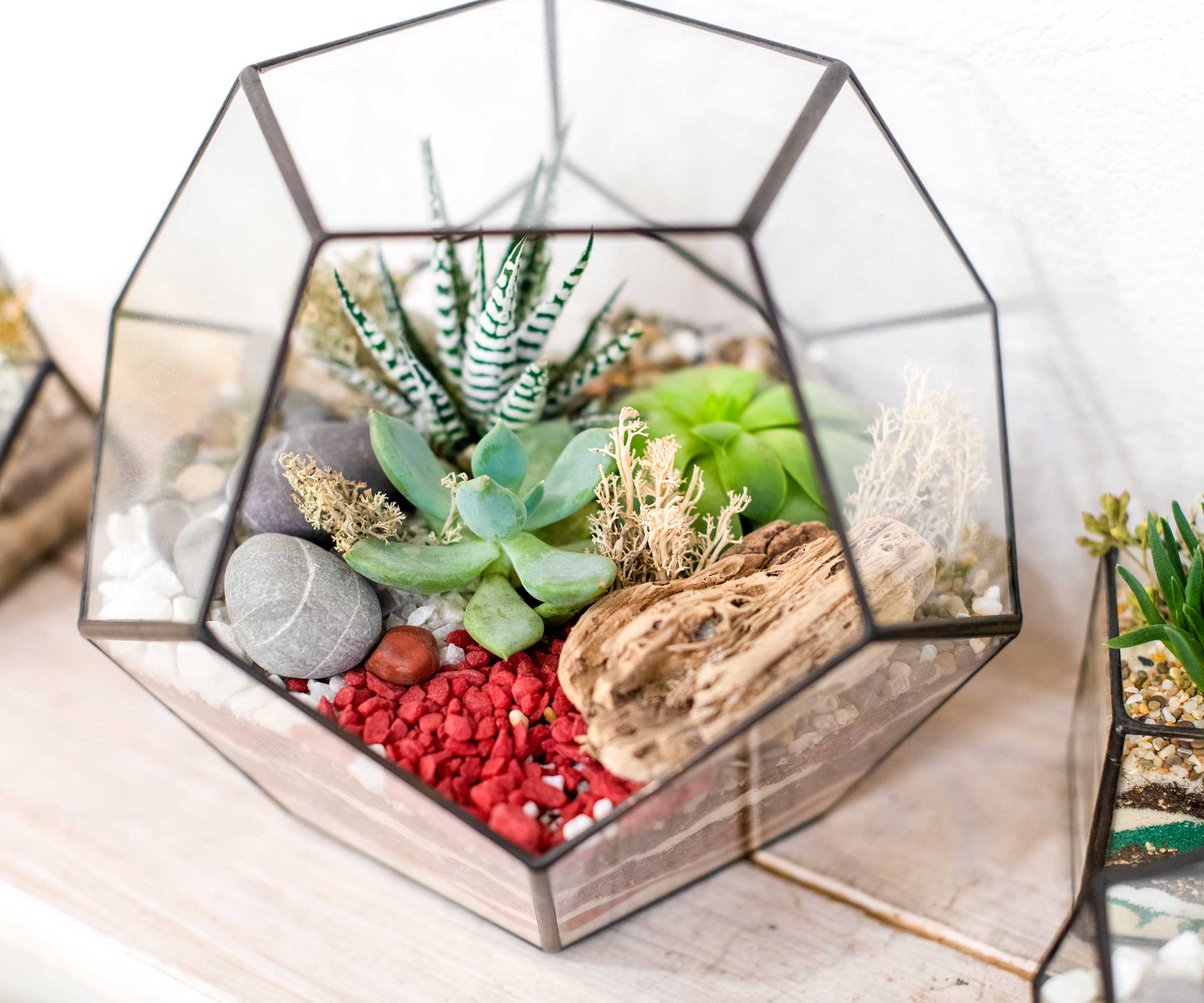
By their nature, open terrariums make plants exposed to surrounding conditions. This can cause big shocks to your plants - even an open window or door can change the humidity of the room and potentially harm your plants. By the same token, open terrariums are more at risk from temperature changes.
Open terrariums are at a higher risk of infestation from pests and microbes. Because they're open to the air, you can't sterilize them in the way you might with a sealed terrarium. Mealybugs and pectobacteria can easily establish themselves in an open terrarium and wreak havoc on your plants.
Terrariums are far from the only way to bring some greenery into your home, and nor are they the only way to tackle humidity. There are plenty of houseplants that help to absorb moisture in the air and lots of tiny houseplants that fit in tight spots better than a neat terrarium.







